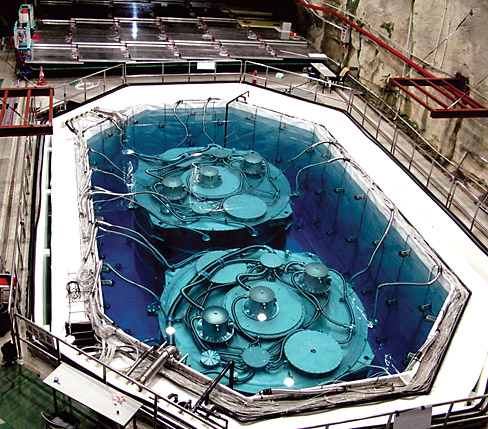news notes: Daya Bay experiment revs up
DOI: 10.1063/PT.3.1291
The first pair of detectors (shown below) at the Daya Bay neutrino oscillation experiment in southern China came on line in August. By measuring the flux and energy distribution of electron antineutrinos from the Daya Bay and Ling Ao nuclear power reactors, the experiment is intended to determine the least-known neutrino mixing angle; observations close to and far from the reactors will be compared.
The Daya Bay experimental tunnels and the three experimental halls have been excavated. The two near underground halls are about 360 m and 500 m from the reactors, and the far hall is at roughly 1800 m. Four of the eight antineutrino detector modules have been built. “Getting the first experimental hall on line is significant,” says the project’s US scientific spokesman, Kam-Biu Luk of the University of California, Berkeley. “It will allow us to have a head start in evaluating the performance of the detectors.” The full experiment is due to be up and running by next summer. The rival Double Chooz experiment in France could have first results by the end of the year. (See PHYSICS TODAY, November 2006, page 31
China covered the civil construction costs and half of the detector costs. The US put in $35 million for the detectors, and Hong Kong, Taiwan, the Czech Republic, and Russia made smaller contributions.

DAYA BAY COLLABORATION

More about the Authors
Toni Feder. tfeder@aip.org





